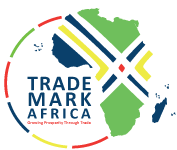MWEA, Kenya – It’s the end of term school prize-giving day and the atmosphere is expectant and excited. One by one the pupils’ names is announced. They walk out in their best clothes to get their certificates, a handshake and a warm round of applause. It’s a typical scene. Except that these pupils are mostly middle-aged farmers, both men and women, whose livelihoods depend on them putting lessons learned into practice and growing crops according to the standards of the Good Agricultural Practice Code (GAP). “Smallholder farmers hold the solution to hunger and poverty in rural areas,” says Napthaly Kariuki of the Horticultural Produce Marketing Association of Kenya (HPMAK). “To get accepted in international markets, both the European Union (EU) and East African, you need to grow according to the best practice, and that means GAP." There are about 250 certificates awaiting distribution on the desk set up by the Fresh Produce Exporters Association of Kenya (FPEAK), which is spearheading the campaign to help farmers across the East African Community (EAC) grow food for tables in EU states and in neighbouring countries. “I am so happy today. I have learned things that will help me make my shamba (smallholding) grow better produce to sell for me and my family. This is like getting a prize at school,” said Grace Wambui, who grows beans and tomatoes nearby. “Growing fresh produce employs about one million people in Kenya, and it’s one of the top three export earners. Smallholders account for about 70...
East African farmers go back to school to learn how to grow cash
Posted on: June 26, 2014
Posted on: June 26, 2014





















